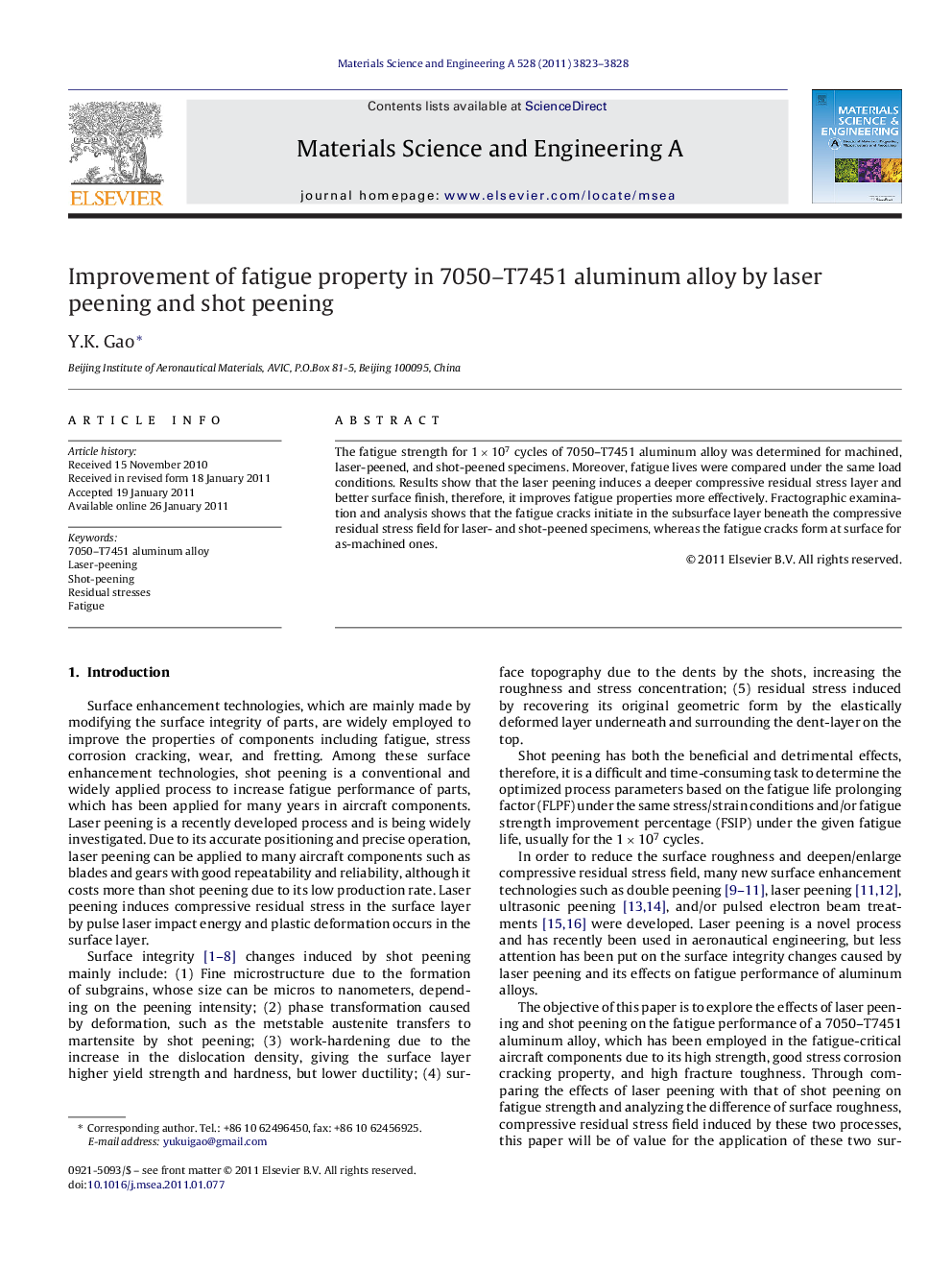| Article ID | Journal | Published Year | Pages | File Type |
|---|---|---|---|---|
| 1578663 | Materials Science and Engineering: A | 2011 | 6 Pages |
The fatigue strength for 1 × 107 cycles of 7050–T7451 aluminum alloy was determined for machined, laser-peened, and shot-peened specimens. Moreover, fatigue lives were compared under the same load conditions. Results show that the laser peening induces a deeper compressive residual stress layer and better surface finish, therefore, it improves fatigue properties more effectively. Fractographic examination and analysis shows that the fatigue cracks initiate in the subsurface layer beneath the compressive residual stress field for laser- and shot-peened specimens, whereas the fatigue cracks form at surface for as-machined ones.
Graphical abstract.Figure optionsDownload full-size imageDownload as PowerPoint slideResearch highlights► The maximum residual stress for laser-peened samples was found at the surface. ► Two methods of FLPF and FSIP were analyzed to get the optimum process parameters. ► The fatigue cracks are at the subsurface for shot- and laser-peened samples. ► The comprehensive effect of surface integrity on fatigue property was considered.
